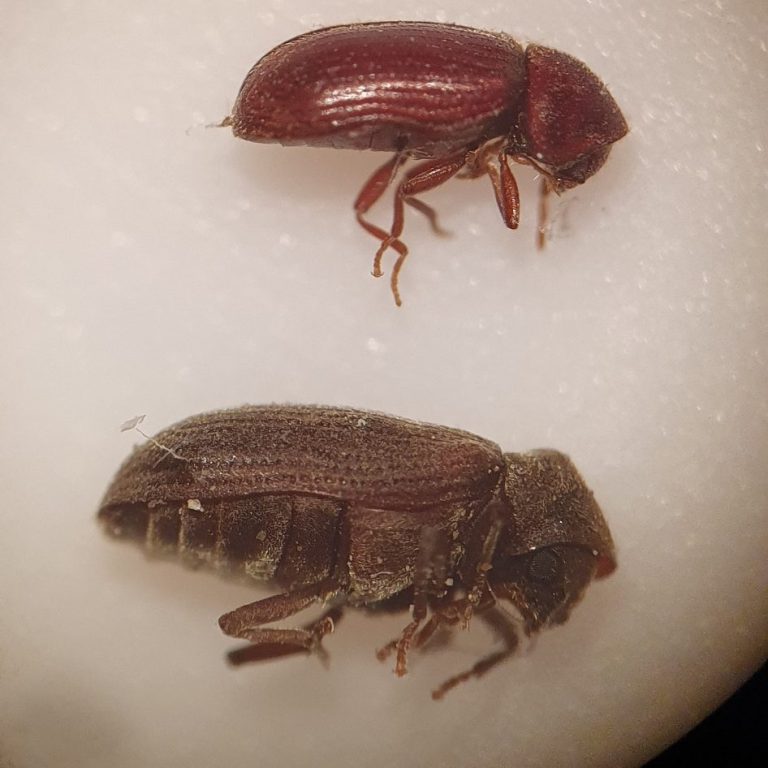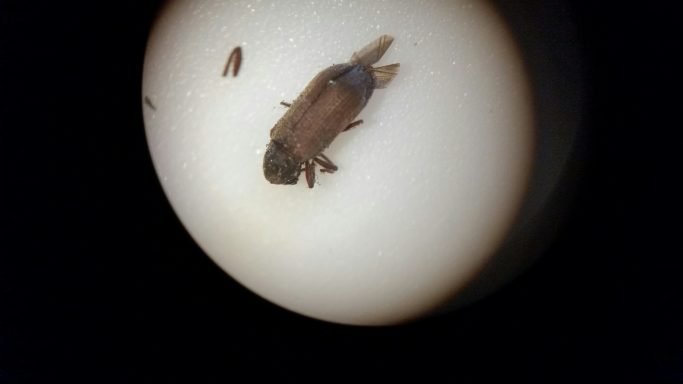Woodworm Surveys & Treatment
What is Woodworm??
What is Woodworm?
Wood boring insect infestation is commonly described as woodworm. However, this is actually just a term used to describe a number of different species of wood boring insects and not just one type insect.
The most common species of woodworm found in properties across the UK is the Common Furniture Beetle (Annobium Punctatum).
The Common Furniture Beetle does not just attack furniture as their name suggests, but can also attack building timbers such as joists, floorboards etc. In most cases treatment of Common Furniture Beetle is fairly straightforward. Any structurally-weakened timber should be removed and replaced with pre-treated timber
Other common woodworm species which may also be found in buildings are:
Wood Boring Weevils (Pentarthrum huttoni) - They only attack rotten timber. By simply stopping the source of moisture and replacing the rotten wood, the infestation is eradicated.
Deathwatch Beetle (Xestobium rufuvillosum - usually confines itself to attacking Oak and Elm. Deathwatch Beetle infestations can require more extensive treatments than for Common Furniture Beetle infestations.
Powderpost Beetle (Lyctus brunneus) -Only attacks tropical hardwoods. Treatments are not always necessary as it is unlikely to thrive in the climate and will usually die out naturally. It is usually found in imported wooden furniture.

How to Identify a Woodworm Problem Within Your Home?
There are a few common signs that can help in identifying a possible woodworm/wood boring insect problem. The signs often become apparent at different stages of the life-cycle of the woodworm/wood boring beetles. The diagram shows the life-cycle stages
What are the signs of an active woodworm infestation?
Woodworm Beetles Emerging
You may see adult beetles emerging from their holes or they may be visible about your property, often on windowsills and on white surfaces. If possible, keep hold of a few of them in a small jar so our surveyor can identify them for you.
Bore Dust (Frass)
You may also come across what looks like fine powdery sawdust (Frass) near the exit holes. This is bore dust produced by the insect.
Sometimes, although exit holes may not be visible, you may find bore dust underneath timbers, on floors and on roof timbers.
Active or Inactive Infestation?
Active infestations will normally be identified by finding the above (Beetles emerging and frass), though this is not always evident and the activity might be out of sight.
It is always highly recommended that a qualified surveyor undertakes a survey when a woodworm problem is suspected. We have years of experience in the assessment and identification of timber defects caused by woodworm. All our woodworm surveys are carried out by our Certificated Surveyor of Remedial Treatments (CSRT). Our surveyor has undertaken training and examinations to be able to identify all types of wood boring insects which may infest your home.

Woodworm Beetle Identification
The Picture Shows - Common Furniture Beetle (bottom) & a Biscuit Beetle (top)
Can you tell the difference between the two?
Very similar in appearance and closely related, these insects can easily be confused and misidentified.
The Common Furniture Beetle can cause damage to important timbers and require a specialist treatment at a cost, whilst a Biscuit Beetle infestation will just require the infested food/materials to be removed.
This is why the correct identification is so important. A CSRT Surveyor is trained to recognise the difference.
Wood Boring Weevils
Above is a video of a Wood Boring Weevil under a microscope in our office. The beetle was found in a piece of damp skirting board on a survey.
Common Furniture Beetle
Above is a close up of an adult Common Furniture Beetle. This is the beetle which is referred to as being woodworm. However, the name woodworm comes from its larval stage before it pupates into a beetle.
How do you treat Woodworm?
Correct identification of the insect is essential before any consideration can be given to whether treatment is needed.
Treatment for an active infestation of Common Furniture Beetles will normally involve a spray application of an insecticide or the application of a gel/paste. Our treatments are safe and effective.
All our quotation survey reports contain detailed specifications with important health and safety advice.
On occasion structurally weakened timber may need to be removed and replaced with pre-treated timber.


Woodworm Treatments
Carried out by ‘Professional Biocide Users’
CK Walker Damp & Timbers team members are trained to apply timber treatments correctly and in a safe manner.
Our employees have successfully passed an examination in the safe use of biocides and are now on the PCA Professional Users of Biocides Register for the Protection of Timber in Buildings.
This register provides a reference point for both suppliers and consumers who want to verify the professionalism of applicators,
Do you charge for Woodworm Surveys?
We do charge a fee for our PCA CSRT qualified surveyor to visit your property in Derbyshire and West Nottinghamshire. The fee covers the cost of the survey only.
Unlike some other companies, our surveyors are not commission based and are not required to “find” work on every visit.
We pride ourselves on our honest and thorough inspections.
If your woodworm problem is inactive, we will tell you and not advise any unnecessary chemical treatments.
To arrange for a Woodworm Survey in Derbyshire or West Nottinghamshire call 01332 960160 or 01629 352019
CK Walker Damp & Timbers provides Damp Proofing, Condensation Control, Re-Plastering, Fungal Decay & Woodworm solutions throughout Derbyshire & West Nottinghamshire.
CK Walker LTD trading as CK Walker Damp & Timbers – Company Number 09072842 - Address – Unit 4, Block 13, Amber Business Centre, Greenhill Lane, Riddings, Alfreton, Derbyshire, DE55 4BR.
For all your damp proofing & timber treatment needs in Derbyshire & West Nottinghamshire, call us on 01332 960160 or 01629 352019.
©Copyright. All rights reserved.
We need your consent to load the translations
We use a third-party service to translate the website content that may collect data about your activity. Please review the details in the privacy policy and accept the service to view the translations.




